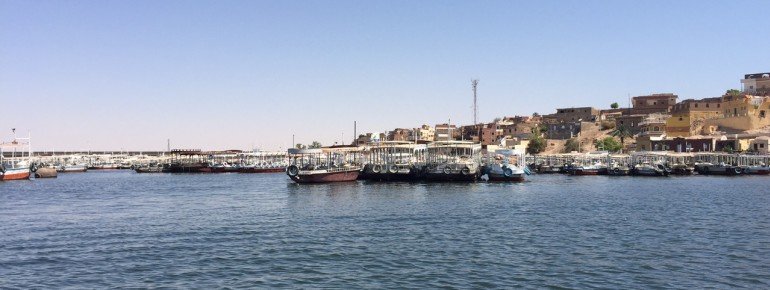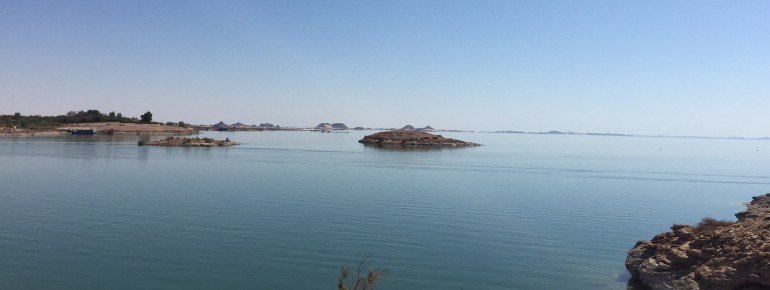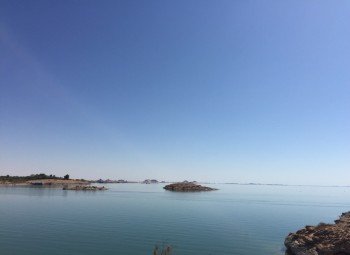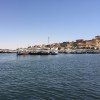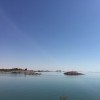Contents
Description
The Aswan Dam is located around 13 kilometers south of the Upper Egyptian city of Aswan. It dams the Nile to form Lake Nasser, the second largest reservoir in the world, which stretches a total of 500 kilometers into neighboring Sudan. The purpose of the dam is to protect the Egyptian population and agriculture from the annual flooding of the Nile as well as longer periods of drought at the source rivers.
Architecture
The dam is over 3,800 meters long and 111 meters high, 980 meters wide at the base and around 40 meters wide at the crest. There is a concrete monument at the western end of the dam. It shows a lotus flower with a cogwheel and symbolizes the Egyptian-Soviet friendship. There is also a viewing platform at a height of 74 meters.
Power generation
The Aswan Dam hydroelectric power plant has a total capacity of 2,100 megawatts. The electricity generated is fed into the Egyptian capital Cairo and accounts for around ten percent of Egypt's total electricity production.
Historical Information
The old dam wall
The old dam wall is located around seven kilometers southwest of the city. It was built between 1898 and 1902 to regulate the water masses during the annual flooding of the Nile. However, as the largest structure of its kind in the world at the time quickly proved to be too small, the reservoir volume was subsequently increased twice. However, even this was not enough to meet the demand for canal irrigation all year round.
Planning and construction of the new dam
In 1947, Adrian Daninos developed the idea of a new large dam above the city of Aswan. However, the reigning Egyptian King Faruq showed no interest in this, which is why the project was not implemented at first. However, after the overthrow of the king in 1952, his successors Muhammad Nagib and Gamal Abdel Nasser very quickly decided in favor of the construction. Negotiations for the financing of the project by the World Bank failed due to political differences of opinion between Egypt and the USA regarding the official recognition of the People's Republic of China. In the end, the project was supported by the Soviet Union. In addition, Egypt concluded an agreement with Sudan in 1959, according to which the inflow was to be divided between the two countries. Construction of the new dam finally began on January 9, 1960 and was completed on July 21, 1970. The project cost a total of around 2.2 billion euros. 451 people lost their lives during construction.
Cultural consequences
The construction of the new dam had far-reaching cultural consequences. Firstly, the Nubians living here had to be resettled. This measure affected around 50,000 people who had to give up their homes due to the creation of Lake Nasser. As a result, many elements of Nubian culture were lost. Today, there are only three original Nubian villages left in the area around Aswan.
On the other hand, several cultural monuments were relocated with the help of UNESCO, as they would otherwise have sunk into Lake Nasser. The most famous examples are the two temples of Abu Simbel and the temple of Philae. Nevertheless, numerous historical cultural assets sank into the water.
How to get there
As the dam is an Egyptian military area, you should only visit it in a tourist bus with an experienced guide. Also note that photography and filming of the dam wall is prohibited, as with all Egyptian military installations!

